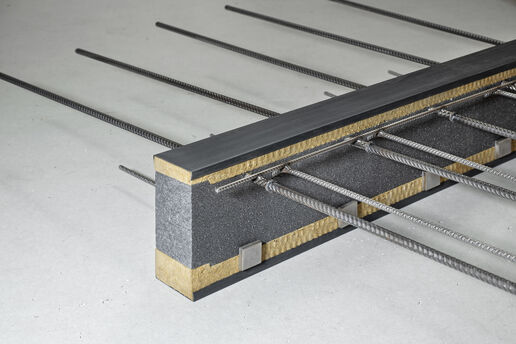 United Kingdom: english
United Kingdom: english International: english
International: english Australia: english
Australia: english Austria: deutsch
Austria: deutsch Canada: english
Canada: english Czechia: český
Czechia: český Denmark: dansk
Denmark: dansk Finland: suomi
Finland: suomi France: français
France: français Germany: deutsch
Germany: deutsch Hungary: magyar
Hungary: magyar Italy: italiano
Italy: italiano Netherlands: nederlands
Netherlands: nederlands Norge: norsk
Norge: norsk Poland: polski
Poland: polski Romania: românesc
Romania: românesc Slovakia: slovenčina
Slovakia: slovenčina Spain: español
Spain: español Sweden: svenska
Sweden: svenska Switzerland: deutsch
Switzerland: deutsch UAE: english
UAE: english United Kingdom: english
United Kingdom: english USA: english
USA: englishDace Road mixed-use development in Hackney Wick, London
Inspired by the use of thermal breaks on the urban Fish Island Village scheme, HG Construction - contractors of the mixed-use Dace Road development, recognised the versatility of Egcobox® thermal break connectors, whilst providing fire protection to REI 120, for this project and set about looking at how it could be utilised to provide a better end result for the client.
Project specification & requirements
Dace Road is a 6,500m2 mixed-use development which sits in a prominent location, at the entrance to Fish Island, close to the London Olympic Stadium in Stratford. The area of East London is currently undergoing major regeneration. Existing warehouse structures were demolished to make way for 5 blocks comprising 144 residential units and a commercial unit – all with new public spaces and complete with a commercial courtyard.
HG Construction worked together closely with MAX FRANK to overcome initial construction challenges, and through a series of technical workshops, value engineered the product to work within the development’s build.
Thermal bridging & balcony connectors
Thermal bridges can create increased thermal losses and can be caused by material properties and geometry. The impact of thermal bridging often results in heat loss, condensation and ultimately mould formation within the building. Thermal bridging can be combatted through the control of such factors, using credible thermal break solutions.
Egcobox® thermally insulated balcony connectors, create a thermal break between an external component and an internal component.

The structural function of the Egcobox® unit is provided by a reinforcement framework, manufactured from reinforcing steel, which passes through the thermal insulation and thus connects the unit to the building.
Depending on the choice and alignment of the bars, bending moments and shear force can be transferred. The thermal performance is determined by the insulation material between the internal slab and the external concrete member. For fire protection reasons, mineral wool insulation with low thermal conductivity is regularly used.
The most common application for MAX FRANK Egcobox® is to minimise thermal bridging between the slab and balcony. However, in this case, Egcobox® thermal break units were also supplied to prevent thermal bridging between external insitu cladding panels and the internal concrete structure – designed for both horizontal and vertical cladding panels.
Application: Balconies & parapet walls
Thermal breaks combine structural safety and ideal heat insulation. Egcobox® units are usually installed as cantilever connectors in balconies and in parapet walls. The structural stability of Egcobox® is provided by a framework of steel reinforcement passing through the 60 to 120mm thick mineral wool/rockwool insulation to guarantee fire protection to REI 120. Egcobox® reliably connects components, such as balconies, to the building and encloses roof decks through the installation of parapet walls. The placement of Egcobox® thermal break connectors, in balcony application on this project, is highlighted below.
Application: Precast stone horizontal banding, compliant with fire regulations
The precast stone banding allowed the project contractors to achieve good quality control on the finish of the stone banding to achieve uniform tonal consistency and a distinctive finish. It also provided assurance when planning and programming, knowing that the banding was cast and ready for installation as the frame was erected during construction. As a structural element, the banding also acted as the masonry support for the façade at each storey level. This is where MAX FRANK Egcobox® came in.
Dace Road banding elevations:
Images ©BuckleyGrayYeoman
Jonathan Moran, Senior Quantity Surveyor at HG Construction, stated:
“the thermal connectors were cast in to allow for the banding to act as a thermal and fire-break system”. The above drawings show the banding elevations of one of the blocks, where the reinforcement connectors would be used in this application.
Jonathan also added, "The planned buildings were over 18 metres tall and therefore subject to regulation 7 guidelines. This specific application of Egcobox® and its fire-compliance features played a key role in achieving building control sign-off on this method of construction from a fire-safety perspective”.
Bespoke Egcobox® units were designed and fitted within the insitu façade panels. Egcobox® types FXL & MXL, to REI 120, were specified and designed for this project:



The installation process involved casting the specially manufactured Egcobox® unit into the floor slab. The thermally insulating cantilever connection system, to REI 120, forms a thermal break between the cladding panels and the insitu concrete structure, transferring load whilst maintaining the building’s full structural integrity (see the below illustration).

Project Architects, BuckleyGrayYeoman, stated:
“BGY’s facade designs at Fish Island, across two of the five new mixed-use urban blocks, uses a distinctive reconstituted stone horizontal banding, with an accentuated fluted detail at each balcony set within the main body of brickwork. We were interested in tonal consistency and a high-quality smooth factory finish at these horizontal elements. During our workshops with our Structural Engineers, Price & Myers, and HG, our Main Contractors, we quickly established that this could only be achieved with a precast, which would allow us this millimetre precision, so finely achieved in the fluting.
Precast lends itself to casting-in masonry supports that are thermally broken, such as the MAX FRANK connector. In the horizontal plane at each slab interface, the thermal break is continuously formed, with no additional bracketry, which is often the cause of issues such as cold bridging and interrupted fire breaks. It also meant that the brickwork, which the banding supports, could be formed entirely without traditional masonry angles.
Cambridge Precast have become an integral part of the delivery team. The process requires careful sequencing, understanding of tolerances, and early coordination as these finishing elements had to be ready as the slabs were being poured”.
The below images show the precast stone banding panels in place on Block C and a close-up demonstrating the accentuated fluted detail achieved at each balcony.


Summary
The versatile and adaptable Egcobox® thermal break connection system provides fire protection to REI 120 and conforms to the amended Building Regulations 7(2) for combustible products for England. The thermal break units, also available for curved and steel-to-steel applications, were specially designed by MAX FRANK’s technical department and custom-manufactured for this specific project – and its varying applications. The Egcobox® software allowed straight-forward modelling of thermal break application. By analysing the forces acting at the connection, the software suggested appropriate units that could transfer the moment and shear forces safely from the external balcony to the internal slab side. Egcobox® was so successful in this application on both Fish Island Village and Dace Road, it has since been specified and designed for a similar application on a third scheme by HG Construction, which also forms part of this complete development.
Type of building:
Residential building
Clients and Developers:
Client: Southern Housing
Developer: Berkeley Homes Group
Architect:
BuckleyGrayYeoman
Engineers/ Specialist Planners:
Price & Myers
Building contractor:
HG Construction
Products used



+44 1782 598 041


Max Frank Ltd.
Clough Street, Hanley
Stoke-on-Trent, ST1 4AF
Staffordshire
United Kingdom






